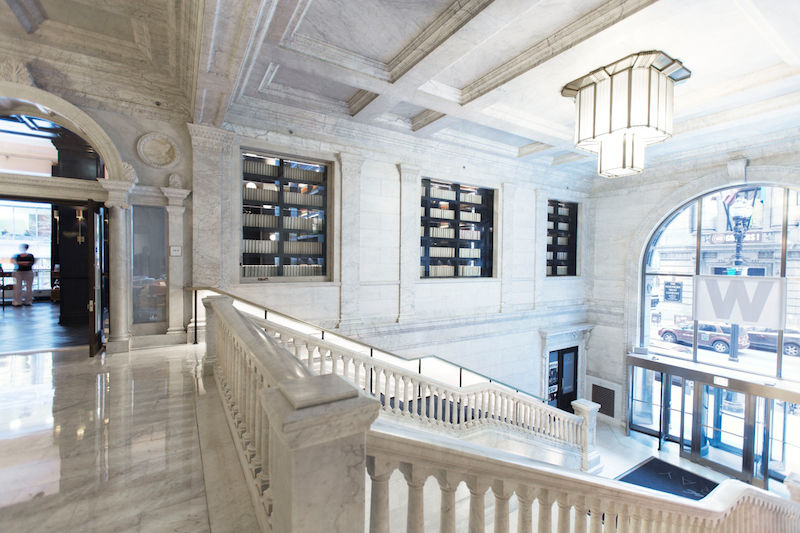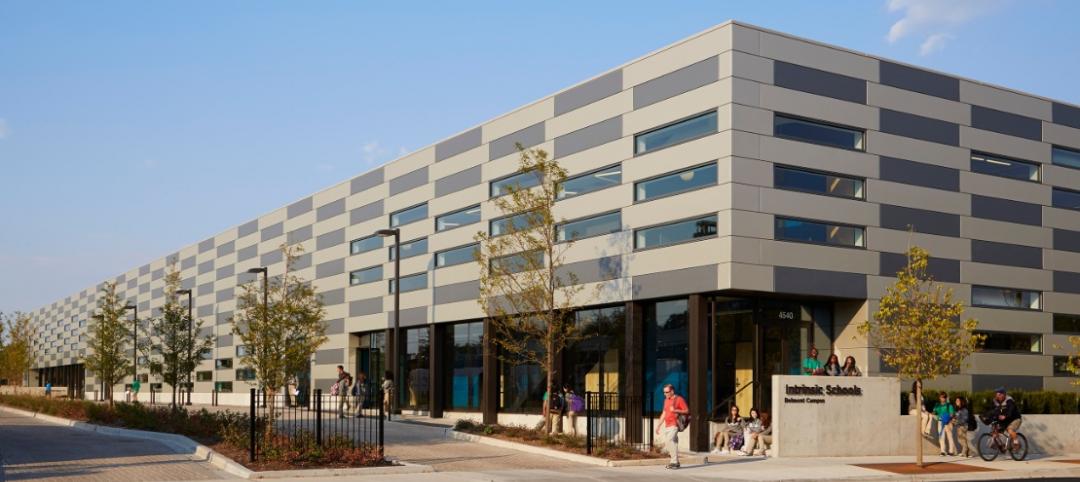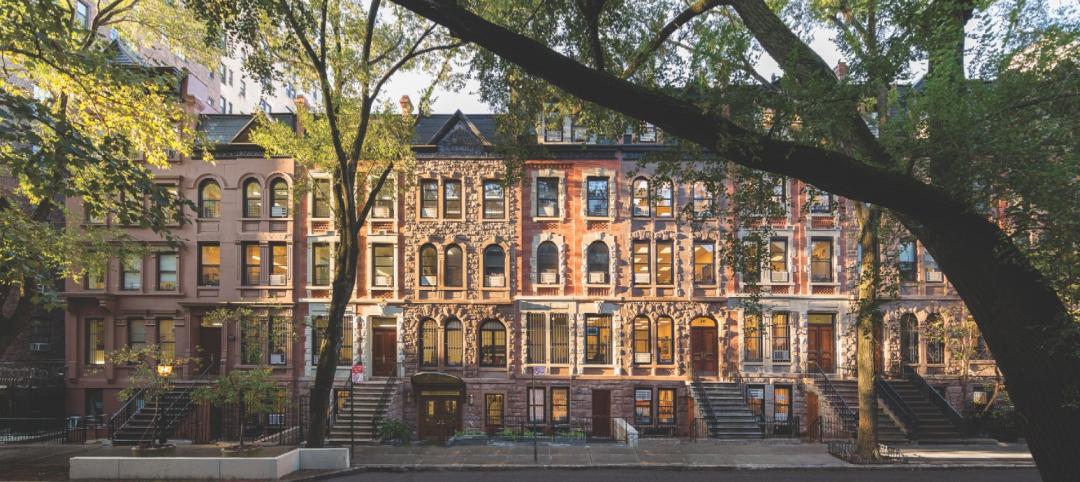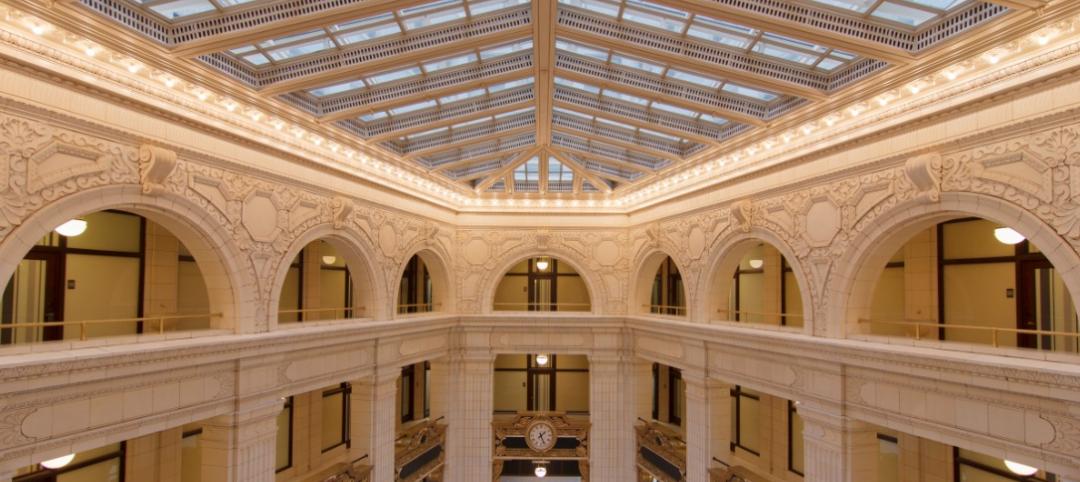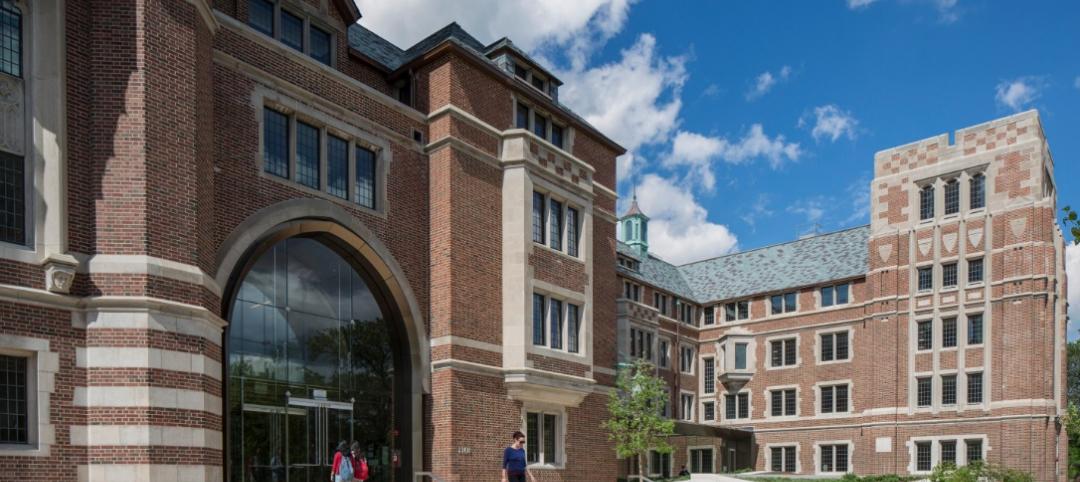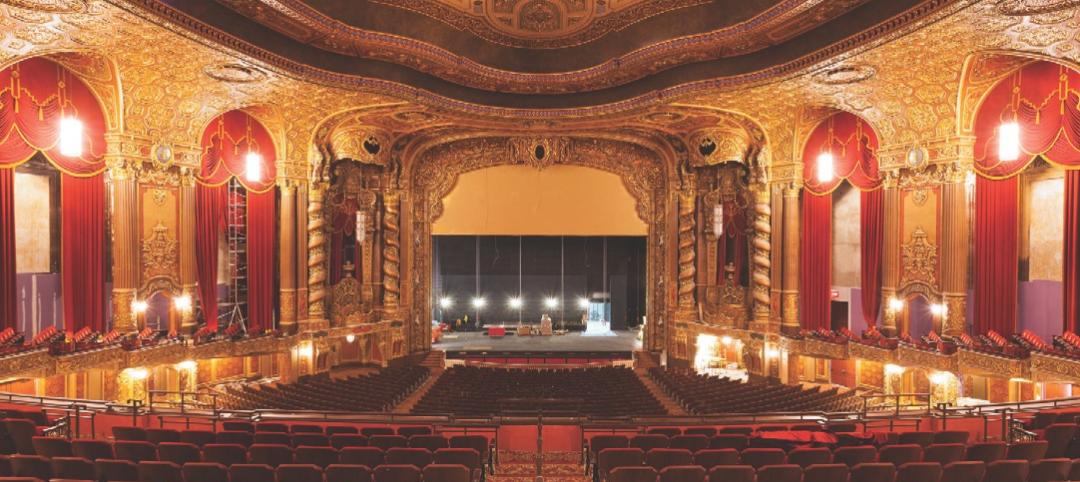By 2006, the New York Life Insurance Building, designed in 1893 by the father of the skyscraper, William Le Baron Jenney, had receded into obsolescence. Its owner, Hamilton Partners, was planning to demolish the 14-story landmark in Chicago’s Loop to make way for a 51-story hotel/office tower next door.
The building, once the Midwest headquarters of New York Life Insurance Company, found a savior in Kimpton Hotels & Restaurants. Kimpton, part of the Intercontinental Hotels Group, bought it from Hamilton in 2013, and worked for the next three years with its project team to execute a robust reconstruction program that preserved the integrity of Jenney’s design while creating a new use for the structure.
The Building Team restored the granite and terra cotta façade and reclaimed more than 500 double-hung windows. It moved the building’s main entrance to West Monroe Street, with a new bronze-clad canopy. The original entrance, on LaSalle Street, now serves as the portal to the Georgia Gray marble double staircase leading to Volume 39, the hotel’s lobby lounge and bar.
The hotel, now called The Gray, has 293 rooms and suites, a fitness center, 12,000 sf of meeting space, and a top-floor ballroom. One of the more stunning additions is Boleo, a South American-style bar that incorporates a 1,200-sf operable skylight.
Due to the lack of drawing documentation, the team had to engage in discovery and investigation over the course of the entire project. The building’s archaic floor framing made it difficult to create new openings for infrastructure and reconfigurations.
The building had no loading dock or space for an exterior hoist, so deliveries had to be made during off hours. An interior hoist had to be installed to move materials. Hazardous materials had to be remediated before interior demolition could begin.
As the awards jury noted, the Building Team overcame all these difficulties and, in keeping with Kimpton’s EarthCare program, executed sustainable and energy-efficient strategies throughout.
Project Summary
Gold Award Winner
Building Team: Gensler (submitting firm, architect, AOR) KHP Capital Partners (owner/developer) Stillwater Consulting (owner’s rep) Kimpton Hotels & Restaurants (operator) Beleco Design (hotel interiors) Parts and Labor Design (restaurant/lounge interior design) Forefront Structural Engineers (SE) AMS Mechanical Systems (mechanical/plumbing engineer) JMS Electric (EE) James McHugh Construction (GC).
Details: 239,000 sf. Construction cost: ConfidentIal. Construction time: October 2014 to August 2016. Delivery method: Design-bid-build.
See all of the 2017 Reconstruction Award winners here
Related Stories
Reconstruction Awards | Nov 16, 2015
Lumberyard turned into Chicago charter school
While the existing structures were in poor condition, the Building Team preserved and restored 75% of the spaces and incorporated historic elements in the final design of the Intrinsic School on Chicago's Northwest side.
Reconstruction Awards | Nov 12, 2015
Columbia Grammar and Preparatory School grows with the times
The 251-year-old NYC school was a design-build project that overcame issues like tight space and zoning appeals during its redevelopment.
Reconstruction Awards | Nov 10, 2015
Restoration of the Whitney Building provides hope for Detroit
Four years ago, Whitney Partners purchased the 253,000-sf Whitney for $3.3 million. Their mission was to turn the 19-story structure into a mixed-use hotel, rental apartment, and retail center that would serve as a reminder of more prosperous times in Detroit’s past.
Reconstruction Awards | Nov 9, 2015
University of Chicago uses space economically with Saieh Hall
The five-story, 100,000-sf seminary was converted into a modern education facility that would be fully integrated into the university’s Hyde Park campus. The project demonstrated the university’s commitment to finding a balance between new construction and adaptive reuse of historically significant buildings.
Reconstruction Awards | Nov 9, 2015
King of kings: Classic brooklyn movie theater stages a return engagement
The theater, which withstood vacancy, neglect and vandalism, has been redeveloped with a goal: balance preservation with the creation of a modern performance space.


